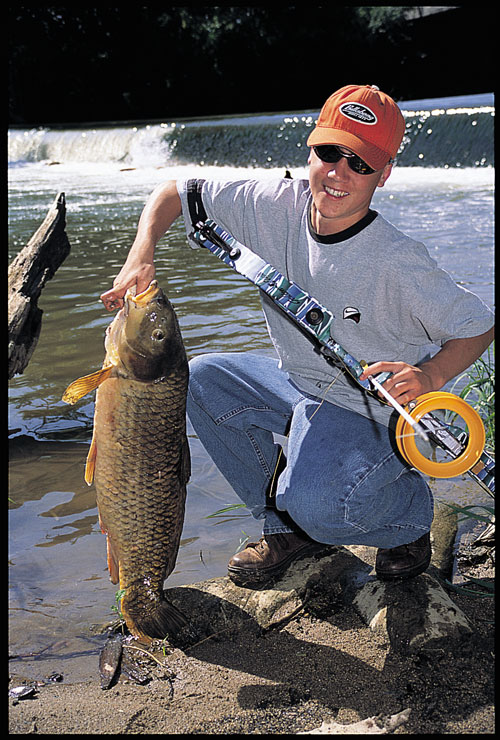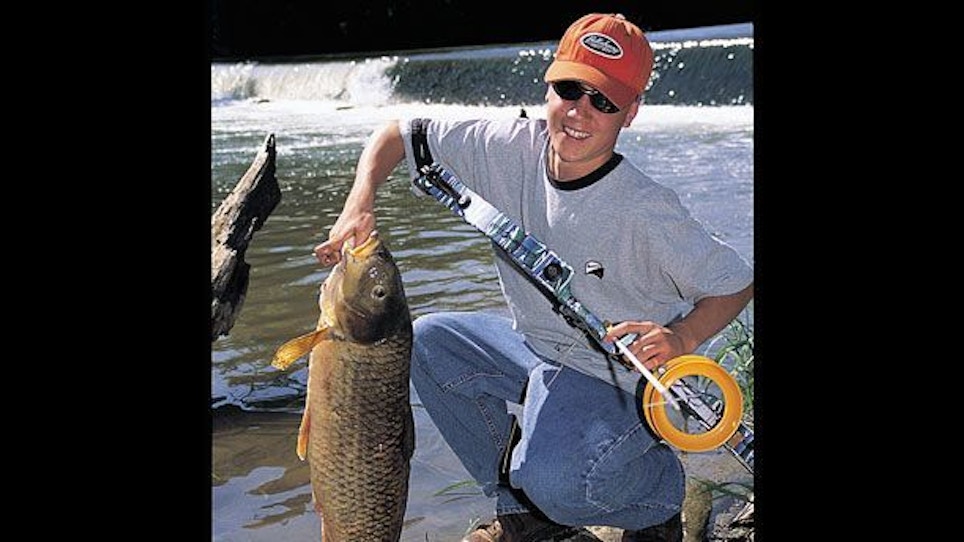 Spring hunting action improves your shooting skills. Woodchucks roam fields and woodlots, carp and other rough fish crowd the shallows, gobblers thunder in early morning announcing their breeding dominance, varmints multiply out of control, and a spring squirrel season opens in many states. Don’t rely just on 3-D to hone your skills. Step into the 4th dimension of bowhunting.
Spring hunting action improves your shooting skills. Woodchucks roam fields and woodlots, carp and other rough fish crowd the shallows, gobblers thunder in early morning announcing their breeding dominance, varmints multiply out of control, and a spring squirrel season opens in many states. Don’t rely just on 3-D to hone your skills. Step into the 4th dimension of bowhunting.
The Spring 5 is no slouch. Like spring training, you’ll put your gear, muscles, and shooting nerves through the ringer of reality. The wind blows, rain falls, and these critters move and run away, just like big game. It is perfect practice for big game, and come fall, you’ll be glad you did!
Spring’s Bowfishing Bonanza
Shooting carp and other rough fish is great sport any time of the year, but especially in the spring when the “rut” takes place. Don Wilson of Hagerstown, Maryland, has successfully “rattled for carp.” OK, it’s a bit of a stretch, but here’s how he entices carp into bow range.
In mid May, carp experience their annual spawn, females laying eggs that are fertilized by males. The process results in considerable splashing in shallow creeks and rivers. The commotion attracts other males who attempt to ram the bulging female, forcing eggs from her body. Wilson struck upon the idea of creating a thrashing sound in the water with a stick and—voila!—carp came running…sort of.
Drifting for carp is great fun, especially on smaller creeks and slow-moving rivers. Canoes are easy to maneuver, yet can get tipsy in the excitement of the moment. Flat-bottom boats are more stable and greatly improved with an elevated platform to shoot from.
Alligator gar make an awesome challenge with archery tackle. These huge fish grow over 100 pounds and often live in remarkably small creeks and bayous. Despite a savage appearance (jaws loaded with needle-like teeth), these powerful predators are good to eat. The loin of the fish looks like venison backstraps and is boneless, tender meat.
Brad Phillips nearly had a fatal encounter with a gar. After arrowing the giant fish, it quickly consumed his line, yanking the Texan into the water like a human water ski. The savvy archer hung on until his breath gave out, forcing him to unleash the finny tiger. Undaunted, he swam back to the boat and resumed the chase. Further up the channel he found weeds shaking in the water. Phillips retrieved his bow and landed the fish, its endurance gone from fighting the vegetation. The gar weighed 83 pounds and measured nearly six feet long.
Bowfishing is usually an instinctive endeavor. Phillips, for example, raises, draws, and shoots his bow in a single action, as do many bowfishermen. If you can see the fish, it can see you and will offer only a quick shot. The challenge of hitting a swimming fish, as it disappears into the depths, is compounded by refracted light. You must shoot below the fish because it isn’t where it appears. Remember the bent stick demonstration in science class?
Although this sounds complicated, you usually get lots of practice, and the gear is very basic. Your “former favorite” compound or recurve makes an ideal base. Add a reel, rest, and a few arrows and you’re ready.
Next: Groundhogs & Gobblers






